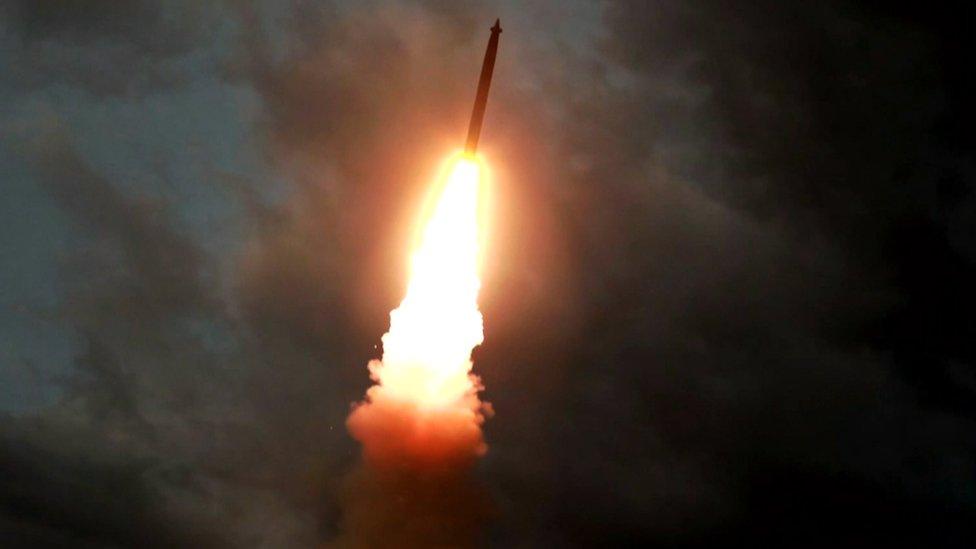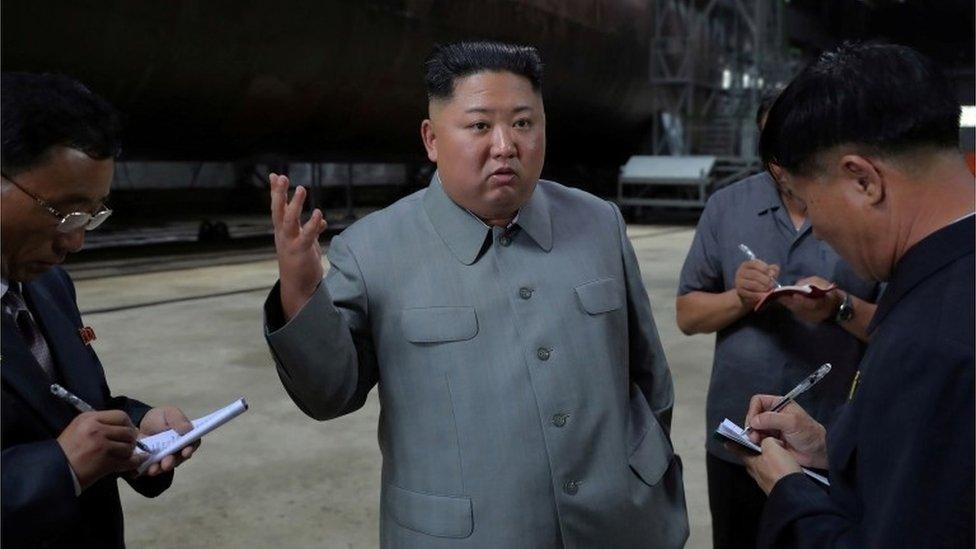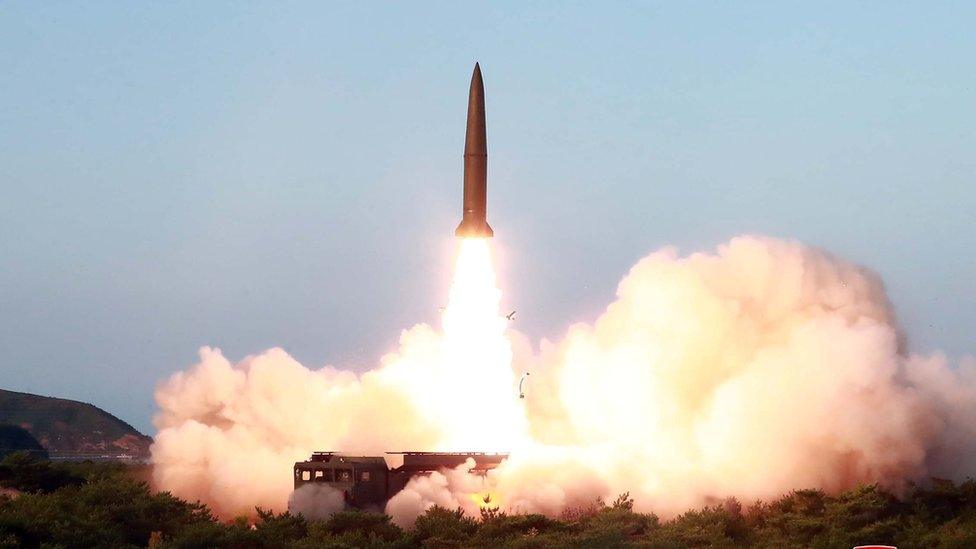N Korea conducts third weapons test in eight days
- Published

North Korea also fired two short-range ballistic missiles last Wednesday
North Korea has fired two projectiles which South Korean officials say appear to have been a new type of short-range missile.
The launch, the third in just over a week, came from North Korea's east coast early on Friday.
The string of tests are being seen as reaction to planned military exercises between South Korea and the US.
On Thursday, the UK, France and Germany called on North Korea to engage in "meaningful" talks with the US.
After a closed-door meeting at the UN Security Council, the countries said international sanctions needed to be fully enforced until Pyongyang had dismantled its nuclear and ballistic missile programmes.
The latest launches happened at 02:59 (17:59 GMT Thursday) and 03:23 local time from the Yonghung area in South Hamgyong province into the Sea of Japan, also known as the East Sea, according to South Korea's Joint Chiefs of Staff (JCS).
It said the missiles flew very low - at about 25km (15 miles) - and travelled about 220km. Analysts said they appeared to have been unusually fast.
A spokesperson from South Korea's presidential office said there was a high possibility they were a new type of short range ballistic missile, similar to those fired last week.
The launch site appeared to have been a new one, said Ankit Panda, adjunct senior fellow at the Federation of American Scientists.
However US President Donald Trump said he was not worried with the recent spate of launches, as they were "very standard" and not part of recent talks with Kim Jong-un.
What about the other tests?
On Wednesday, the North launched two missiles that flew 250km and reached a height of 30km before landing in the Sea of Japan, also known as the East Sea, according to South Korea.
The South identified the missiles as a different type from previous models. But on Thursday, Pyongyang gave a different assessment, saying it had tested a new rocket launcher system, without providing details.
On 25 July, the North had fired two other missiles, one of which travelled about 690km.
That launch was the first since Mr Trump and North Korean leader Kim Jong-un held an impromptu meeting in June at the demilitarised zone (DMZ), an area that divides the two Koreas, where they agreed to restart denuclearisation talks.
Watch the moment in June when President Trump stepped into North Korea
Why is this happening now?
North Korea has recently voiced anger over planned US-South Korea exercises, an annual event which the allies have refused to cancel but have scaled back significantly.
North Korea sees the drills as preparation for war and has called them a "violation of the spirit" of the joint statement signed by Mr Trump and Mr Kim at their first face-to-face talks in Singapore last year.
Pyongyang had warned the exercises could affect the resumption of denuclearisation talks.
US Secretary of State Mike Pompeo said on Monday that he hoped these talks could start "very soon", but that there were no further summits planned.
What about US-North Korea relations?
Last year, Mr Kim said North Korea would stop nuclear testing and would no longer launch intercontinental ballistic missiles.
Nuclear activity appears to be continuing, however, and satellite images of North Korea's main nuclear site last month showed movement, suggesting the country could be reprocessing radioactive material into bomb fuel.

Kim Jong-un was seen inspecting a submarine facility last week
Pyongyang also continues to demonstrate its abilities to develop new weapons despite strict economic sanctions.
It conducted a similar short-range missile launch earlier in May, its first such test since its intercontinental ballistic missile launch in 2017.
North Korea also showed off a new submarine recently, which South Korean officials have determined is capable of carrying up to three ballistic missiles.
- Published26 July 2019

- Published21 April 2020

- Published5 September 2023

- Published28 February 2019
